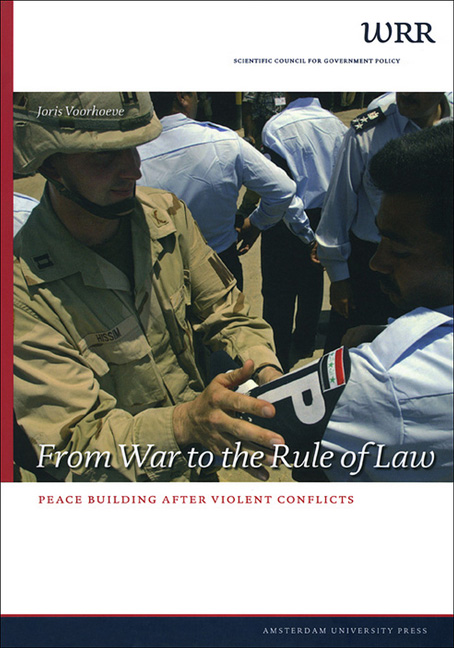Book contents
- Frontmatter
- Dedication
- Contents
- Preface
- 1 Why this Study?
- 2 An Overview of Peacebuilding
- 3 Towards Typology and Theory
- 4 (Re) Establishing Order
- 5 (Re) Building the Rule of Law
- 6 Resources and Costs
- 7 The European Union and Post-Conflict Peacebuilding
- 8 Conclusions and Recommendations
- List of Country Illustrations, Tables, Text Boxes and Maps
- Acknowledgments
- Further Reading
- Some Relevant Websites
3 - Towards Typology and Theory
Published online by Cambridge University Press: 14 January 2021
- Frontmatter
- Dedication
- Contents
- Preface
- 1 Why this Study?
- 2 An Overview of Peacebuilding
- 3 Towards Typology and Theory
- 4 (Re) Establishing Order
- 5 (Re) Building the Rule of Law
- 6 Resources and Costs
- 7 The European Union and Post-Conflict Peacebuilding
- 8 Conclusions and Recommendations
- List of Country Illustrations, Tables, Text Boxes and Maps
- Acknowledgments
- Further Reading
- Some Relevant Websites
Summary
It would be a mistake to generalise quickly about peacebuilding operations. All countries and wars are different. There are at present 192 member states of the United Nations and a number of autonomous but not fully sovereign nations and territories. These countries all have their distinct characteristics. The same applies to wars, civil wars, and other forms of contemporary armed conflict and political violence. No manifestation can be said to be the same as another. Comparative analysis of various cases offers insight, but the number of variables that differ between countries is so large that modesty is necessary when searching for general theory. The large number of variables and the immeasurability of many of them make generalisations about international politics, comparative politics and violent conflicts very complex. In some areas of research, useful generalisations are nearly impossible, or remain so abstract that they are almost meaningless. As is the case with human beings, generalisations about states, too, need to be supplemented by a precise analysis of the separate features of each individual case and its unique combinations.
A Deductive Typology
Nonetheless, for the sake of overview, some classification is needed of states in various kinds of trouble. Let us start with deduction, without reference to possible statistical measurement, which will be discussed later. To begin with, the majority of states are in a state of peace only in the minimal sense of an absence of war (negative peace). Usually, in a state which is not experiencing internal war, most of the means of violence are in the hands of the governments’ military and police forces. In between these ‘states in peace’ and ‘states in or at war’ are states which seem at peace, but their peace is brittle, threatened by looming external or civil war, terrorism, widespread crime, drugs lords and armed gangs.
Next to this, one can distinguish among states according to quality of government system. It is clear that some countries in peace are governed well and others very badly. Good government is effective and legitimate. (For a definition of good governance, see section 3.2). As legitimacy and effectiveness are related but separate dimensions, let us first look at legitimacy.
- Type
- Chapter
- Information
- From War to the Rule of LawPeace Building after Violent Conflicts, pp. 29 - 52Publisher: Amsterdam University PressPrint publication year: 2007



